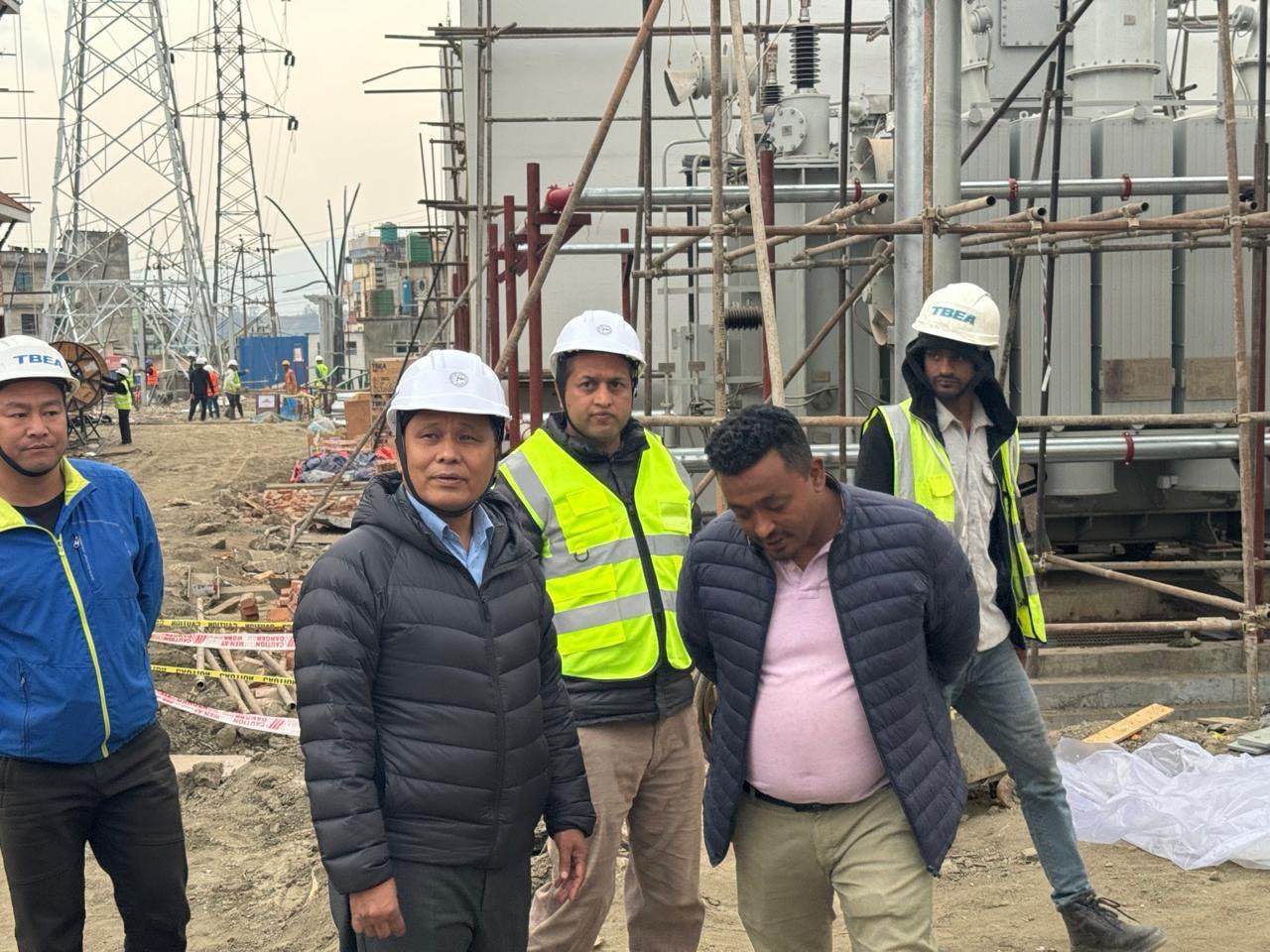

Kathmandu: The Nepal Electricity Authority (NEA) is constructing six 132/11 kV substations across Kathmandu and Bhaktapur to enhance the reliability, quality, and safety of power supply in the Kathmandu Valley. Among these, the Teku substation in Kathmandu is already operational, while the Futung and Mulpani substations are in their final stages of completion and expected to begin operations within two months. In Bhaktapur, the Changunarayan substation stands fully constructed and awaits commissioning, while the Chobhar substation is set to be operational by Ashar (June/July) and the Thimi substation within eight months.
Each substation boasts a capacity of 90/90 MVA, collectively enabling the valley to transmit approximately 500 megawatts of electricity—matching its current peak demand. Looking ahead, the NEA has projected a surge in demand to 3,100 megawatts by 2050 and has initiated plans to construct 20 additional substations at 220, 132, 33, and 11 kV levels. Land acquisition for these projects is complete, and preliminary surveys have laid the groundwork for a 220 kV transmission ring around the valley’s periphery.
To bolster supply, the Lapsiphedi substation—a multi-level facility (400/220, 220/132, and 132/11 kV)—is underway to channel electricity from hydropower projects in the Tamakoshi and Sunkoshi river basins. Simultaneously, the NEA is modernizing infrastructure by automating existing substations, undergrounding cables, and upgrading feeders and transformers. These efforts are funded by the Government of Nepal, the NEA, and concessional loans from the Asian Development Bank (ADB), Japan International Cooperation Agency (JICA), and the World Bank.
During a recent inspection, NEA Executive Director Kulman Ghising stressed the urgency of completing projects to meet rising demand. He highlighted that operationalizing all six substations would streamline power management, ensuring reliable and high-quality supply.
In southeastern Kathmandu, a 132/11 kV substation in its final phase aims to begin operations by Chaitra (March/April). This facility will connect to the Chapali-Bhaktapur 132 kV transmission line and distribute power through eight 11 kV feeders to areas like Jadibuti, Pepsicola, Kandaghari, Gothatar, Mulpani, Jorpati, Sanghu, and Thimi. Meanwhile, the Futung substation, nearing completion, will draw power from the Balaju-Chapali 132 kV line, improving supply to Balaju, Nepaltar, and Goldhunga within two months.
The Chobhar substation, part of the critical Thankot-Chapagaun-Bhaktapur 132 kV line, will source electricity from the Matatirtha Substation. A 132 kV underground line will extend from Chobhar along the Ring Road to the upgraded Lagankhel Substation in Lalitpur, with future expansions planned to Chapagaun and Harisiddhi. These upgrades aim to transform Kathmandu Valley’s power grid into a resilient, future-proof system capable of sustaining the region’s growth for decades.